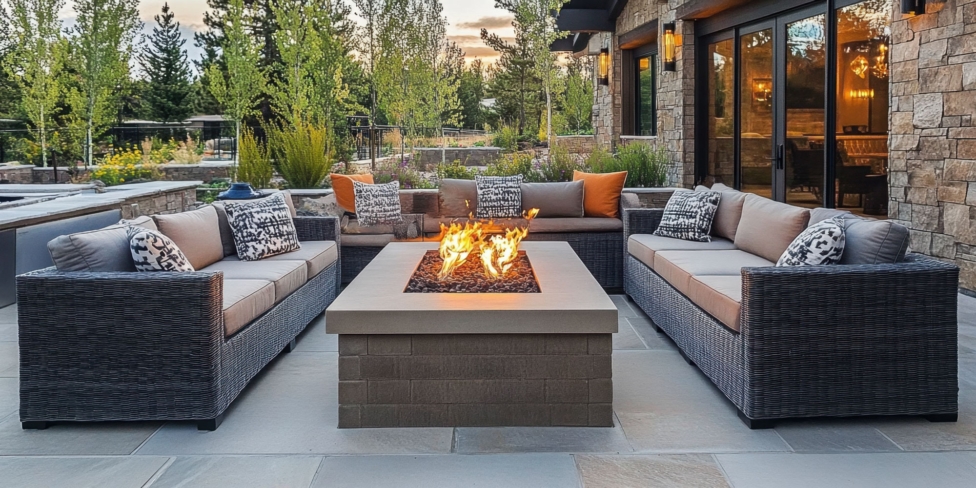
Creating Your Dream Fire Feature with Firegear: Real Solutions for Real Outdoor Spaces
Many homeowners want to add a fire feature but get stuck before the first brick is laid. Too many options. Not enough guidance. And questions like “Will this work in my space?” or “Should I go gas or wood-burning?” just make things harder.
Creating your dream fire feature shouldn’t feel like guesswork. This guide simplifies the process with real answers and practical tips—so you can design something that looks right, works well, and lasts for years. Firegear provides the tools, components, and expert support that make custom fire projects easier to plan and complete.
Start with the Purpose Before the Product
A fire feature isn’t just something you install. It’s part of how you live outdoors. Start with how you want to use the space, and let that guide every decision that follows.
Ask yourself:
- Do you want a place to entertain?
- Are you trying to extend patio season?
- Do you prefer quiet nights with close family?
Each use case leads to different types of fire features. Entertaining calls for 360-degree seating. A small retreat might call for a compact bowl. Year-round comfort often means fixed gas installations.
Firegear offers ready-to-finish enclosures and custom Pro Series burners that fit each of these goals. The key is starting with use—not just aesthetics.

Design Decisions That Actually Work
Every outdoor space is different. What works on a sprawling patio might fail on a small deck. Your layout, traffic flow, wind patterns, and safety zones all play a role in what you can—and should—build.
Consider these factors:
- Space and movement: Avoid cramming a fire feature into tight areas. Leave room for chairs, circulation, and comfort.
- Wind and exposure: Windy zones call for wind guards and placement that blocks gusts.
- Clearances: Safe installation means respecting manufacturer-recommended distances from walls, eaves, and walkways.
Firegear’s technical resources and burner documentation make it easy to get these measurements right. Customizing starts with accurate planning—and smart choices.

Gas or Wood? Know the Pros and Cons
Some homeowners love the crackle of a wood fire. Others prefer the speed and control of gas. Each option has trade-offs. Most modern outdoor installations lean toward gas because of ease, consistency, and cleaner operation.
Gas Fire Features:
- No smoke, ash, or prep time
- Immediate ignition and shutoff
- Works with smart home controls
- Must be installed by a licensed professional if connecting to a home gas line
Wood Fire Features:
- More maintenance and cleanup
- Limited in some locations due to fire regulations
- Better suited for open spaces
For most homes, gas provides more control and less hassle. Firegear’s Pro Series burners are engineered for long-lasting performance and precise flame control. They’re built from high-grade materials and available in sizes and layouts that suit both small patios and large gathering spaces.
Note: Always consult a qualified technician for gas line planning, rerouting, or connection.

Plan Your Installation with Fewer Surprises
No matter the design, fire features take coordination. Even small projects involve permits, gas or electrical planning, drainage, and ventilation. If you’re working with a contractor, the process moves faster when using reliable, well-supported systems.
A basic installation might include:
- Local code checks and permits
- Site prep and base construction
- Gas or electrical line runs
- Burner installation and ignition setup
- Final inspection and safety testing
Firegear’s components are designed to integrate cleanly into professional builds, and the team provides detailed manuals and support. This reduces headaches for installers—and peace of mind for you.

Make It Look Like It Belongs
Some fire pits look out of place—floating in the middle of a patio or clashing with the rest of the yard. Others blend in beautifully as if they were there from day one.
The difference? Design that works with your environment, not against it.
Style Tips:
- Use matching stone, stucco, or tile to align with your hardscape
- Choose furniture that supports the space and scale of the flame
- Add warmth with rugs, throw pillows, or built-in lighting
Firegear’s ready-to-finish enclosures give you a head start by providing a base that can be finished in any style you choose. That gives you flexibility—without starting from scratch.
Think Beyond the First Season
Creating your dream fire feature should lead to years of comfort—not constant upkeep. Reliable systems, weather-resistant materials, and regular maintenance go a long way.
Maintenance tips:
- Clean burner media once a year
- Use a cover during heavy rain or snow
- Have gas lines inspected every season
- Drain and secure control boxes if temperatures dip below freezing
Firegear’s stainless steel burners are made to perform across seasons and climates. But even the best components last longer when cared for properly.

Final Check Before You Build
Here’s a simple checklist before starting your project:
- What’s the main purpose of the space?
- Do you have accurate measurements?
- Is gas or wood the better choice for your needs?
- Are you working with a licensed pro for gas work?
- Have you reviewed Firegear’s technical resources and specs?
- Are you following local codes and HOA rules?
Firegear’s team is here to help—from planning and product selection to installation support. Whether you’re working with a contractor or starting a backyard upgrade on your own, you don’t have to figure it out solo.
Bringing It All Together
Creating your dream fire feature doesn’t require a design degree or weeks of research. It just takes a little direction, the right components, and expert guidance.
Firegear makes it easier by offering proven systems, flexible design options, and dependable support. You bring the vision—we’ll help you build something that works.